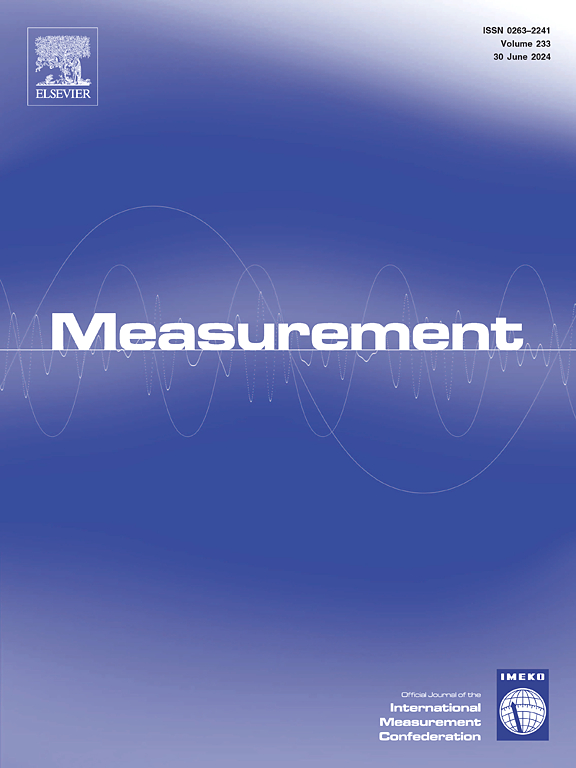GFMS:一种基于三维视觉的汽车装配焊缝间隙和平整度自动测量系统
IF 5.6
2区 工程技术
Q1 ENGINEERING, MULTIDISCIPLINARY
引用次数: 0
摘要
汽车装配接缝的间隙和平整度(G&;F)是直接决定汽车外观质量和性能的重要指标。传统的人工检测方法已不能满足现代对效率和准确性的要求。尽管基于点云的G&;F检测技术具有出色的精度特性,但在复杂的装配线环境中,它面临着噪声、冗余数据和缝间干扰等问题带来的挑战。为了解决这些问题,我们设计了一个集成点云数据采集和分析的自动G&;F测量系统(GFMS)。在此基础上,提出了一种基于相邻帧线点云空间分布的自适应优化方法,通过空间密度和局部几何约束对接缝区域进行自适应分割,通过多级滤波去除离群点和表面平滑,对缺失区域进行高斯加权填充。最后,我们提出了一种基于干扰抑制的G&;F分析方法。引入了一种具有增长聚类的加权投票机制来消除接缝间的干扰点。采用了先验约束圆拟合,减小了圆角轮廓缺失带来的误差。对所有帧点云的计算结果进行平均,得到最终的G&;F。在标准块上的实验验证表明,最大偏差为0.006 mm(间隙)和0.004 mm(齐平)。与地面真值(CMM)标准相比,在汽车接缝G&;F验证过程中,GFMS在两个G&;F测量中的最大偏差为0.02 mm。与传统的测量方法相比,该方法大大提高了测量的精度和效率。本文章由计算机程序翻译,如有差异,请以英文原文为准。
GFMS: An automatic system for gap and flush measurement in automobile assembly seams based on 3D vision
The gap and flush (G&F) of automobile assembly seams are important indicators that directly determine the exterior quality and performance. Traditional manual inspection methods fail to meet modern demands for efficiency and accuracy. Although point cloud-based G&F detection technology demonstrates excellent accuracy characteristics, it faces challenges in complex assembly line environments caused by noise, redundant data, and inter-seam interference. To address these problems, we design an automatic G&F measurement system (GFMS) that integrates point cloud data acquisition and analysis. Then, we propose an adaptive optimization method based on the spatial distribution of adjacent frame line point clouds, achieving adaptive segmentation of seam regions through spatial density and local geometric constraints, multi-level filtering for outlier removal and surface smoothing, and Gaussian-weighted filling for missing regions. Finally, we propose a G&F analysis method based on interference suppression. A weighted voting mechanism with growing clustering is introduced to eliminate interference points between seams. A prior constrained circle fitting is adopted to reduce errors caused by missing fillet profiles. The final G&F are obtained by averaging the calculation results of all frame point clouds. Experimental validation on standard blocks demonstrated maximum deviations of 0.006 mm (gap) and 0.004 mm (flush). The GFMS exhibited a maximum deviation of 0.02 mm in both G&F measurements when compared with the ground truth (CMM) standards during automobile seams G&F validation. Compared with traditional measurement methods, the proposed method greatly improves accuracy and efficiency.
求助全文
通过发布文献求助,成功后即可免费获取论文全文。
去求助
来源期刊

Measurement
工程技术-工程:综合
CiteScore
10.20
自引率
12.50%
发文量
1589
审稿时长
12.1 months
期刊介绍:
Contributions are invited on novel achievements in all fields of measurement and instrumentation science and technology. Authors are encouraged to submit novel material, whose ultimate goal is an advancement in the state of the art of: measurement and metrology fundamentals, sensors, measurement instruments, measurement and estimation techniques, measurement data processing and fusion algorithms, evaluation procedures and methodologies for plants and industrial processes, performance analysis of systems, processes and algorithms, mathematical models for measurement-oriented purposes, distributed measurement systems in a connected world.
 求助内容:
求助内容: 应助结果提醒方式:
应助结果提醒方式:


